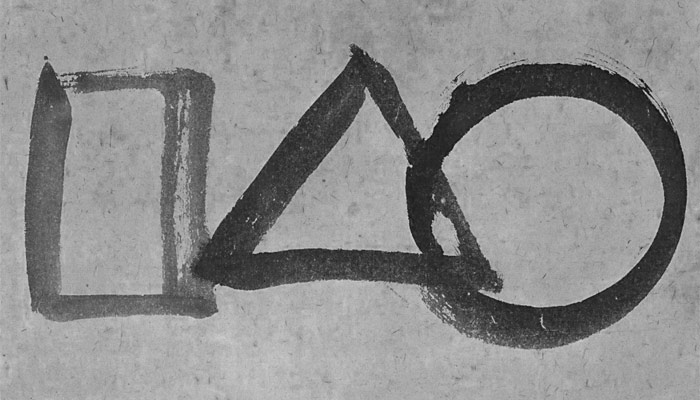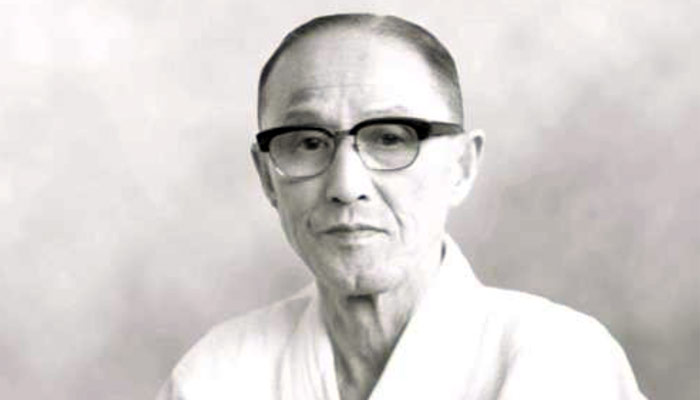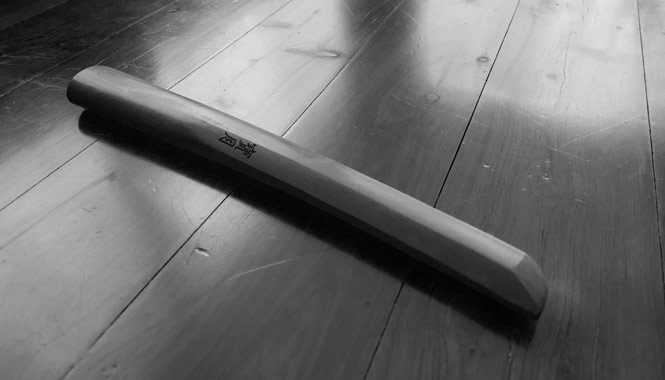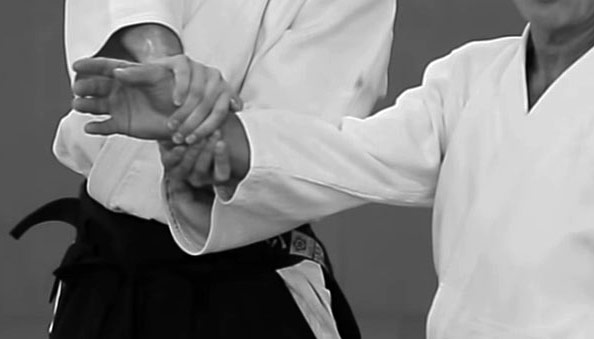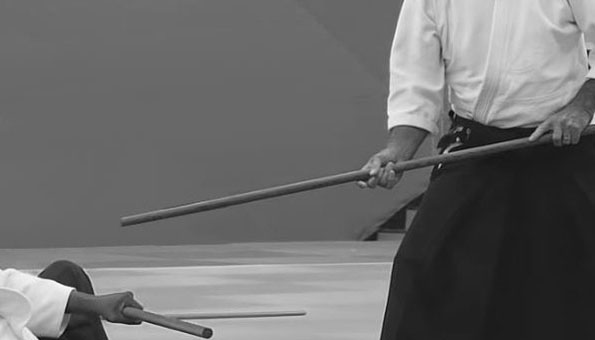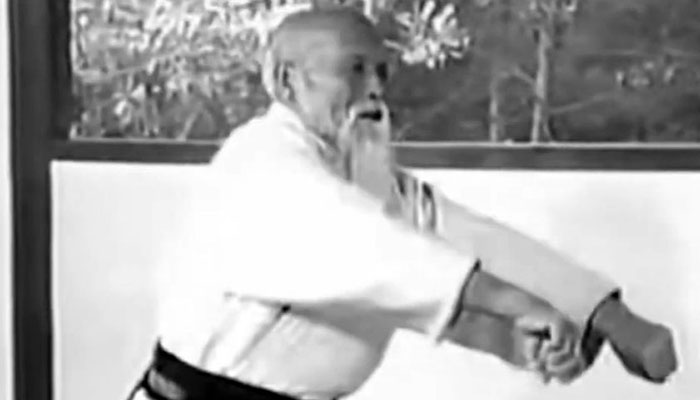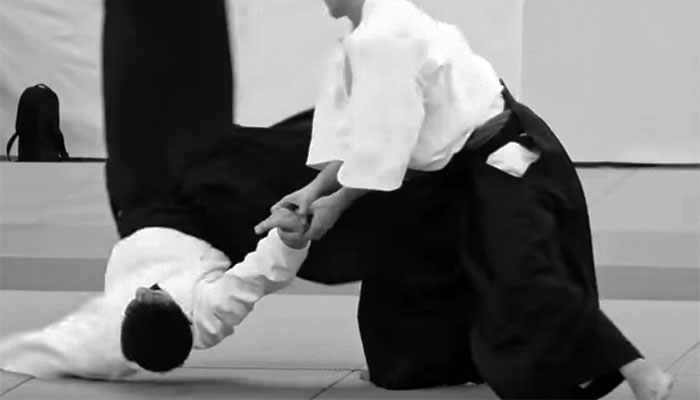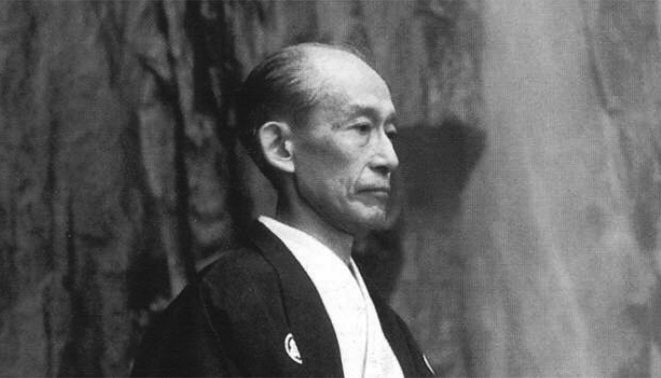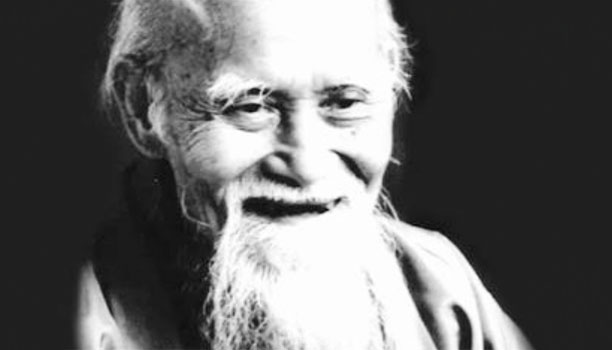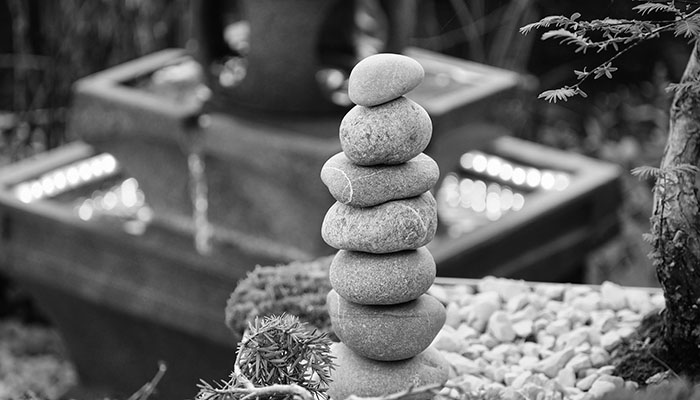-
Musubi – The Triangle, Circle and Square in Aikido
The founder of Aikido, Morihei Ueshiba, used the symbols of square, triangle, and circle to describe the philosophy of Aikido. These symbols represent the concept of Musubi 結び, which is a Japanese Shinto 神道 term that describes the force or energy that brings different individuals or things together. Each of the Musubi symbols has a special meaning and is associated with a kami 神 (deity). Iku Musubi (Triangle) represents the kami of life 生靈 and is associated with the continuous cycle of birth, death, and rebirth. Taru Musubi (Circle) represents the kami of plentifulness 足靈, and Tamatsume Musubi (Square) represents the kami of completion and stability 玉留霊. The three symbols…
-
Gozo Shioda: The “Unworldly Budoka” and his Yoshinkan Aikido
Gozo Shioda 塩田 剛三 was a prominent aikido master and the founder of the Yoshinkan style of aikido. Despite his small stature, standing at 154cm and weighing 46 kg, he is known as the “Unworldly Budoka” 不世出の武道家 in Japan. Shioda was born on September 9, 1915, in Tokyo, Japan. His early exposure to martial arts included Kendo and Judo, in which he excelled, achieving a 3rd dan in Judo during secondary school. His proficiency instilled confidence in his martial art skills. In 1932, doubts arose as he observed Ueshiba and his disciples practicing Aikido, questioning its authenticity. Ueshiba himself noticed Shioda’s uncertainty and invited him for a personal practice session.…
-
Tanto and its Use in Aikido
Tanto 短刀, which literally means “short sword”, is a traditional Japanese knife typically single-edged and between 15 and 30 cm in length. The earliest tanto dates back to the Heian period (794-1185), where it was primarily used for outdoor activities like hunting and fishing. Over time, the tanto became more widely used as a weapon by the samurai class. Samurai typically carried two swords – a full-size katana 刀 (daito 大刀) and an 30-60 cm intermediate-size wakizashi 脇差 (shoto 小刀). However, in some cases, they may have also carried a tanto in place of a wakizashi. Tanto was particularly useful in close-quarters combat in confined spaces and was often used…
-
Kuzushi – A Fundamental Principle of Aikido
Kuzushi 崩し is a term widely used in Japanese martial arts. Kuzu 崩, literally meaning crumble or collapse, and kuzushi generally refers to breaking the opponent’s balance in a martial arts context. It is commonly used in Judo but is also used in Aikido and other martial arts, although they may interpret it slightly differently. In Aikido, Kuzushi should happen on the first contact. It is achieved through a combination of timing and positioning. By using precise timing, the Aikido practitioner can anticipate their opponent’s movements and apply force at just the right moment to unbalance them. Proper positioning is also crucial, as it allows the Aikido practitioner to use…
-
Ueshiba’s Jo in Aikido: Unification of Martial and Spiritual Principles
The history of the jo 杖 in Aikido can be traced back to the founder of Aikido, Morihei Ueshiba, who was known for his extensive martial arts training, including the art of the jo. The origins of the jo in Japanese martial arts can be traced back even further, to the 17th century, when Muso Gonnosuke 夢想權之助, a samurai who was defeated in a duel with the legendary swordsman Miyamoto Musashi 宮本武蔵, developed a new form of martial art that focused on the use of a short staff, which he called Shindo Muso Ryu Jojutsu 神道夢想流杖術. Shindo Muso Ryu Jojutsu 神道夢想流杖術 Over time, jojutsu was also incorporated into other martial…
-
Exploring the Significance of Torifune and Furitama in Aikido and Shinto Practice
Torifune and Furitama are commonly practiced preparatory exercises in Aikido. Torifune 鳥船, which is typically translated as “bird rowing” or literally as “bird boat,” is also known as funakogi undo 船漕ぎ運動 or “boat rowing exercise.” The earliest mention of Torifune was in Kojiki 古事記, an ancient Japanese chronicle of myths, where it was referred to as Ame no Torifune 天の鳥船 (Heavenly Bird Boat). It was the name given to one of the deities born from Izanagi 伊邪那岐 and Izanami 伊邪那美, two of the most important kami (deities) in Japanese mythology. They are sister and brother, and also husband and wife, and they are the creators of the Japanese archipelago and…
-
Zanshin and Mushin – The Two “Hearts” in Aikido
Zanshin 残心 is a Japanese term that is often used in the context of martial arts. It is typically translated as “lingering mind” or literally as “lingering heart”. It refers to a state of alertness and awareness that a martial artist maintains even after a technique has been executed. In practical terms, zanshin means that a martial artist is constantly prepared for any potential attack or counterattack, and remains focused and attentive even when the immediate threat has passed. Zanshin is often considered to be a critical component of effective martial arts practice, as it allows a practitioner to stay alert and respond quickly and appropriately to any changes in…
-
A Brief Biography of the Second Doshu
Kisshomaru Ueshiba 植芝 吉祥丸 (1921-1999) was a Japanese martial artist and the second Doshu 道主 of Aikido after his father, Morihei Ueshiba, who founded the martial art. Kisshomaru Ueshiba was born in Ayabe, Kyoto, Japan, 1921. His father Morihei Ueshiba was already a renowned martial artist. Kisshomaru formally started his Aikido training in 1936. He also studied kendo and Kashima Shinto-ryu 鹿島新当流 kenjutsu during childhood. During World War II, Kisshomaru Ueshiba was drafted into the Japanese military and served as an instructor in hand-to-hand combat. After the war, he returned to his martial arts training under his father’s guidance and began teaching Aikido to the public. Kisshomaru played a crucial…
-
A Very Brief Biography of the Founder
Morihei Ueshiba 植芝 盛平, known as O-Sensei (Great Teacher 大先生) by his followers, is the founder of Aikido. He lived during a time of great social, political, and economic upheaval in Japan. Born in 1883 in Wakayama Prefecture 和歌山県, Ueshiba grew up in a country that was rapidly modernizing and westernizing, as the government implemented policies to modernize the country’s economy, education system, and military. As a young man, Ueshiba trained in a range of martial arts, including Jukenjutsu 銃剣術, Kenjutsu 剣術, Jujutsu 柔術 and Judo 柔道. He also served in the military during the Russo-Japanese War of 1904-1905, where he saw firsthand the devastating effects of violence and war.…
-
Hello world!
Welcome to AikidoDiscovery.net, a website dedicated to exploring the fascinating world of the Japanese martial art Aikido! At our website, we’re passionate about sharing our love of Aikido with practitioners of all ages and levels, as well as those who have never practiced it before. Our website is designed to be a starting point for anyone interested in exploring Aikido more deeply. We regularly post short articles on a variety of topics related to Aikido. Whether you’re interested in the history of Aikido, the people who have made significant contributions to its development, the philosophy, the techniques and weapons used in Aikido, or even the spiritual aspect, we’ve got it…
